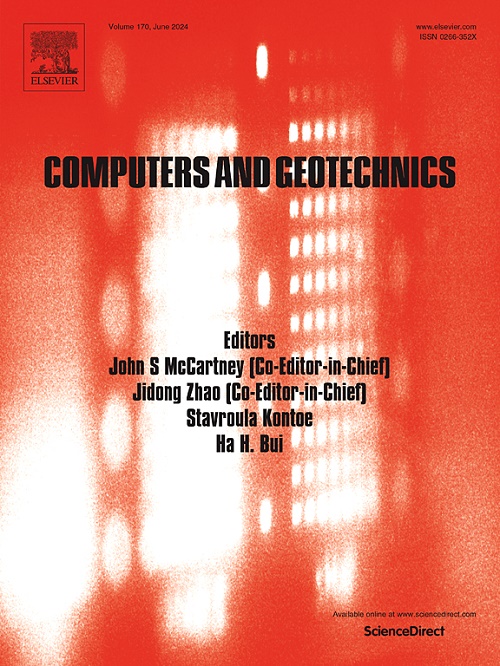从桩场数据自动化现场特征
IF 6.2
1区 工程技术
Q1 COMPUTER SCIENCE, INTERDISCIPLINARY APPLICATIONS
引用次数: 0
摘要
元建模技术由于能够在显著减少计算量的情况下实现高预测性能和适应性,越来越多地应用于土-结构相互作用和岩土工程设计中。重点是根据监测资料更新特定地点的岩土参数。然而,根据项目场地的异质性、各向异性和本构模型的选择,校准问题的维数可能会大大增加。对于这样的场景,代理预测的质量可能在性能方面令人望而却步。此外,一个经常被忽视的方面是元模型应用于简化的基于地质的地基模型,而不是根据现有的原位测试计算出的力学土壤行为剖面。本研究介绍了两种以贝叶斯实践为导向的方法,从有限的桩场数据中更新岩土本构模型参数,并在基于cct的异质地基模型中引发误差传播:基于代理的方法和混合自适应工作流程。提出了一种自适应差分进化过渡马尔可夫链蒙特卡罗算法,以评估其对高维后向分布的渐近收敛性。这些方法应用于嵌入天然土壤沉积物中的钻孔灌注桩,承受静态和循环拉伸载荷。拟议的工作流程旨在利用商业岩土工程软件的标准功能和已建立的本构模型,从而实现实际实施。这两种方法提出了优化框架,能够利用有限的场地特定桩的现场测试数据共同更新高维岩土参数。本文章由计算机程序翻译,如有差异,请以英文原文为准。
Automating site characterization from pile field data
Metamodeling techniques are increasingly applied to soil–structure interaction and geotechnical design due to their capacity to achieve high predictive performance and adaptability with significantly reduced computational demand. Focus is given on updating site-specific geotechnical parameters from monitoring information. However, depending on project site heterogeneity, anisotropy and constitutive model selected, the dimensionality of the calibration problem can increase substantially. For such scenarios, the quality of surrogate prediction might be prohibitive in terms of performance. In addition, an often-neglected aspect is metamodel application to simplified geological-based ground models over mechanical soil behavioral profiles computed from available in-situ testing. This study introduces two Bayesian practice-oriented methodologies to update geotechnical constitutive model parameters from limited pile field data and eliciting error propagations within heterogenous CPT-based ground models: a surrogate-based approach and a hybrid-adaptive workflow. An adaptive Differential Evolutional Transitional Markov Chain Montecarlo is proposed to assess the asymptotical convergence toward high dimensional posterior distribution. These methodologies are applied on a drilled-and-grouted pile, embedded in a natural soil deposit, subjected to static and cyclic tensile loading. The proposed workflows are designed to leverage standard features of commercial geotechnical software and established constitutive models, enabling practical implementation. The two methods propose optimization frameworks capable of jointly updating high dimensional geotechnical parameters using limited site-specific pile field test data.
求助全文
通过发布文献求助,成功后即可免费获取论文全文。
去求助
来源期刊

Computers and Geotechnics
地学-地球科学综合
CiteScore
9.10
自引率
15.10%
发文量
438
审稿时长
45 days
期刊介绍:
The use of computers is firmly established in geotechnical engineering and continues to grow rapidly in both engineering practice and academe. The development of advanced numerical techniques and constitutive modeling, in conjunction with rapid developments in computer hardware, enables problems to be tackled that were unthinkable even a few years ago. Computers and Geotechnics provides an up-to-date reference for engineers and researchers engaged in computer aided analysis and research in geotechnical engineering. The journal is intended for an expeditious dissemination of advanced computer applications across a broad range of geotechnical topics. Contributions on advances in numerical algorithms, computer implementation of new constitutive models and probabilistic methods are especially encouraged.
 求助内容:
求助内容: 应助结果提醒方式:
应助结果提醒方式:


